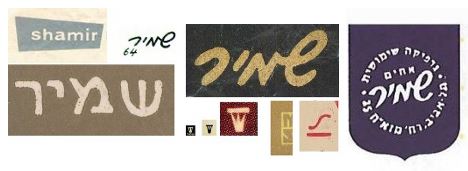News
Students Annual contest
Shamir Brothers
The three brothers Gabriel (1909-1992), Maxim (1910-1990) and Leiba (1914-1994) Scheftelowitsch were born in Liepāja (Libau) Latvia - part of the Russian Empire at the time. The youngest brother Leiba was a singer and Gabriel and Maxim both graduated from the Charlottenburg School of Arts in Berlin. At the end of their studies Gabriel and Maxim opened the Studio "Scheftelowitsch Brothers " in Riga, Latvia.
The Scheftelowitch Brothers Studio opened in 1933 in the family's flat on 9 Albert Street, Riga; a building designed by Konstantin Pekschen in Art Nouveau style. When they came to Tel Aviv in 1934/5 they chose a flat on 84 Rothchild Boulevard which was the first residential building in the country built on column(piloti). It was designed by architect Zeev Richter in the International style, under the influence of Le Corbusier. The flat served as a graphics studio (named Shamir Brothers) and as residence of the two brothers' families.
They were among the founders of the“Graphic Designers Association of Israel”
In the following years they focused mainly on designing posters, newspaper ads and labels for consumer products in modern language and styles. Whether out of ideology or recognition of the Zionist iconography as a promotional marketing tool they often included in their works images of Israeli landscapes, pioneering stereotypes and images of soldiers.
In 1949, Shamir Brothers won first prize for designing the State Emblem of the newly established State of Israel.
In 1958 they won the competition to design four of the new banknotes issued by the Bank of Israel (except the back side of the half- pound and ten pounds banknotes which were designed by Jakob Zim).
In the '50s and '60s they expanded the activities of the studio and branched into designing logos, stamps, medals , magazines - periodicals, books and brochures. Shamir Brothers have designed various official materials and were commissioned to distribute institutional messages expressing the needs of the time such as fund raising for the National Bond, war on the black market, the law of compulsory education, "pilot youth" and the like. Their work was characterized by attention to changes in Israeli culture constantly updating the graphic language, syntax and accurate messages therein and adjusting their designs and styles to meet their clients' objectives as well as the target audiences.
In 1974 Shamir Brothers closed the joint studio and began to work separately. Maxim Shamir focused on designing stamps mainly for African, Central American and Asian countries while Gabriel Shamir retired and worked in graphic design as a volunteer for institutions such as the University of Tel Aviv, hospitals and other non -profit organizations.

Shamir Brothers Signatures
The first signature appeared in newspapers in the fall of 1934 when Maxim Scheftelowitsch settled in Tel Aviv, Palestine. He designed a special presentation of the Hebrew letter “Shin”. They continued to use this signature when they changed their name from Scheftelowitsch to Shamir in mid-1935 at the suggestion of journalist Uri Keisari retaining the same initial. In printed material they signed their name simply as Studia Shamir using a simple font (Studia rather than Studio reflected their Russian origin).
In the 40s their ads were signed “Shamir” using the thin font “Miriam” and a similar thin font in English. They also signed some works as “Shamir and Co.”
In the 60s they started to use a handwritten signature “Shamir” in both Hebrew and English. Some of their Hebrew ads include their signature in English – reason unknown. Many of their postage stamps include a signature: SHAMIR or S or MS in small thin letters somewhere in the design or somewhere around the frame.

Galit Gaon and Dikla Elazar of theShenkar Institute for Research and Documentation of Design interviewed Yoram and Uri Shamir to celebrate the anniversary of the establishment of the Shamir Brothers website. April 2021



(1).jpg)
(1).jpg)